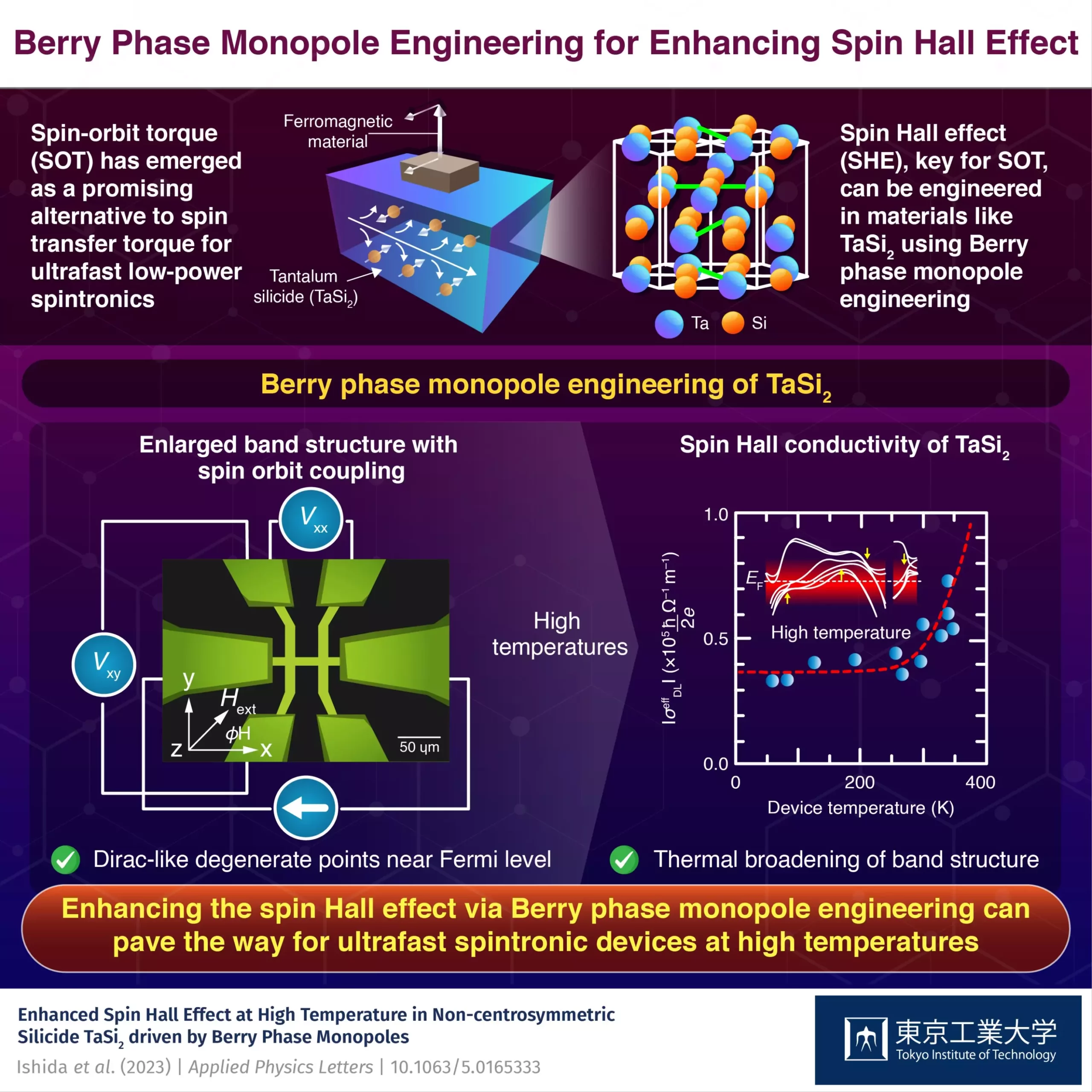Spintronic devices have revolutionized electronic devices by leveraging the spin of electrons for high-speed processing and low-cost data storage. While spin-transfer torque has been a key phenomenon in enabling these devices, recent advancements have highlighted the potential of spin-orbit torque (SOT) as a promising alternative. A team of researchers led by Associate Professor Pham Nam Hai from Tokyo Institute of Technology investigated the impact of Dirac band hot spots on the temperature dependence of SOT in tantalum silicide (TaSi2), shedding light on the exciting avenue of Berry phase monopole engineering. Their findings were published in Applied Physics Letters, emphasizing the potential for enhanced SOT efficiency at high temperatures and the development of advanced spintronic devices.
In non-magnetic materials, the spin Hall effect (SHE) plays a crucial role in achieving spin-orbit torque. Studies have shown that materials with a Dirac band structure, characterized by specific arrangements of electrons in terms of their energy, hold the potential for large SHE due to the presence of “hot spots” for the Berry phase. The Berry phase refers to a quantum phase factor responsible for the intrinsic SHE. Here, tantalum silicide (TaSi2) stands out as a material of interest, with multiple Dirac points near the Fermi level in its band structure, making it well-suited for Berry phase engineering.
Temperature Influence on SOT Efficiency in TaSi2
The research team set out to investigate the influence of Dirac band hot spots on the temperature dependence of spin-orbit torque in TaSi2. Through a series of experiments, they made several intriguing observations. The SOT efficiency of TaSi2 remained almost unchanged from 62 K to 288 K, resembling the behavior of conventional heavy metals. However, as the temperature increased further, both the SOT efficiency and the corresponding SHE suddenly increased, nearly doubling at 346 K. This behavior was distinct from conventional heavy metals and their alloys.
Further analysis led the researchers to attribute the sudden increase in SHE at high temperatures to Berry phase monopoles. Berry phase monopole engineering emerged as a fascinating avenue unlocking efficient high-temperature spin-orbit torque in spintronic devices, such as magneto-resistive random-access memory. The findings offer a novel strategy to enhance SOT efficiency at elevated temperatures, thereby paving the way for the development of high-temperature, ultrafast, and low-power spintronic devices.
The study by Dr. Hai and his team highlights the potential of Berry phase monopole engineering to harness the spin Hall effect in non-magnetic materials effectively. By leveraging the unique characteristics of materials like TaSi2, researchers can explore new pathways for developing advanced spintronic devices. The enhanced SOT efficiency at high temperatures opens up exciting possibilities for creating high-temperature, ultrafast, and low-power spintronic devices, potentially transforming various sectors that rely on efficient data storage and processing.
Spintronic devices have taken a step forward with the emergence of spin-orbit torque as an alternative to spin-transfer torque. The research conducted by Associate Professor Pham Nam Hai and his team sheds light on the potential of Berry phase monopole engineering in non-magnetic materials like tantalum silicide (TaSi2) for achieving high-temperature, ultrafast, and low-power spintronic devices. With the ability to enhance spin-orbit torque efficiency at high temperatures, Berry phase monopole engineering opens up new opportunities for advancements in various fields reliant on efficient data storage and processing. As researchers continue to explore the properties and applications of these materials, we can anticipate exciting developments in the realm of spintronic devices.


Leave a Reply